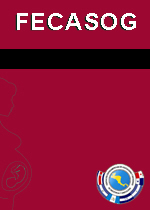Síndrome de Asia: revisión sistemática de literatura
Autores/as
DOI:
https://doi.org/10.37980/im.journal.revcog.20232253Palabras clave:
implantes mamarios, Síndrome de Asia, síntomas asociadosResumen
Ha habido muchos casos de aparición de autoanticuerpos y síntomas de enfermedad después de la exposición a adyuvantes, no solo después del aumento de senos con implantes de silicona, sino también como un efecto secundario muy raro de la vacunación, como el síndrome de la guerra del Golfo o el síndrome de miofascitis macrofágica. Las enfermedades cuyos síntomas se desarrollaron después de dicha exposición adyuvante se denominan síndrome autoinmune/inflamatorio inducido por adyuvantes (ASIA). El grupo de adyuvantes incluye no solo implantes de silicona, sílice, escualeno y aluminio, sino también componentes de tinta utilizados para hacer tatuajes. Analizando los informes disponibles sobre la influencia de los adyuvantes en el desarrollo de enfermedades autoinmunes, se concluye que, además de la exposición prolongada a la silicona, también es necesaria la coexistencia de otros factores, como genéticos o ambientales. Los análisis claramente no confirman un mayor riesgo de desarrollar una enfermedad autoinmune después del aumento de senos con implantes de silicona o tatuajes, pero parece que entre estas pacientes hay un grupo que está más predestinado a desarrollar síntomas de la enfermedad. En la población general, los beneficios de la vacunación son obvios, y el riesgo de eventos adversos graves después de la inmunización es incomparablemente menor que el riesgo de desarrollar una enfermedad específica y sus complicaciones, también para pacientes con enfermedades autoinmunes diagnosticadas. Debido a la heterogeneidad de los datos en estudios previos y las dificultades para diagnosticar ASIA, parece necesario realizar más análisis de la influencia de los adyuvantes en el desarrollo de enfermedades autoinmunes y refinar los criterios de diagnóstico de ASIA, que ahora permiten un diagnóstico demasiado fácil de esta enfermedad.
Archivos adicionales
Publicado
Número
Sección
Licencia
Derechos de autor 2023 Infomedic Intl.Derechos autoriales y de reproducibilidad. La Revista RevCog es un ente académico, sin fines de lucro, que forma parte de la Sociedad Centroamericana de Ginecología y Obstetricia. Sus publicaciones son de tipo ACCESO GRATUITO y PERMANENTE de su contenido para uso individual y académico, sin restricción. Los derechos autoriales de cada artículo son retenidos por sus autores. Al Publicar en la Revista, el autor otorga Licencia permanente, exclusiva, e irrevocable a la Sociedad para la edición del manuscrito, y otorga a la empresa editorial, Infomedic International Licencia de uso de distribución, indexación y comercial exclusiva, permanente e irrevocable de su contenido y para la generación de productos y servicios derivados del mismo.








